BACK TO finalistS
Finalist
THE WALL OF HOPE
Project title : The Wail of HopeThe answer of unheard scream from people at slums housing Theme/ Concept : The rectification of Economic Disparity through sustainable economy and environment approach Every place, from villages, towns, to entire countries across the globe, undoubtedly experiences economical issues that require communities to achieve stability from an economical system […]

Project title : The Wail of Hope
The answer of unheard scream from people at slums housing
Theme/ Concept : The rectification of Economic Disparity through sustainable economy and environment approach
Every place, from villages, towns, to entire countries across the globe, undoubtedly experiences economical issues that require communities to achieve stability from an economical system in order to attain a decent life. From this, arise those who are economically capable and those who are not, as the result, it will clearly show the disparity between both parties. Logically, those who are capable can easily sustain their basic needs such as food, shelter, and clothing. Meanwhile, those who are not capable should prioritize one of the basic needs, with food being the most essential. Consequently, other necessities are often neglected.
People who are economically disadvantaged generally tend to neglect education and prioritize seeking livelihood by seeking for more suitable jobs. As a result, they may lack awareness of their surroundings, becoming selfish and only concerned about themselves.
The site selection was conducted on Bridgen Katamso Street, Medan, North Sumatra. Along the access road in front of the site, there are many commercial areas like rows of shops along the street. Directly adjacent to the site is a mall primarily serving daily needs. In contrast, behind the mall and next to the site are areas directly bordering the untamed river, where there are many slums. This underlines the economic disparity happen in this area.
The site's condition was once a zoo. The zoo was relocated, and the site was then left without a clear continuation plan for its construction. Consequently, the site remains abandoned with no clear activity, much litter is left unattended due to the absence of a proper waste management system. Although in the past, locals used the site for selling and trading when the zoo was still operational. This clearly portrays the livelihoods being snatched away.
This condition illustrates the injustice towards those who are economically disadvantaged, forcing them to seek any available job, even with minimal pay. They just wanted to survive without considering their own or their future generations' well-being. This cycle will continue through generations, the phenomenon known as the chain of poverty.
What if we facilitate an activity benefiting both economically stable and unstable parties due to the economic gap? What if we play a reverse card to reverse the job loss caused by the unclear purpose of the site's construction?
The site's design is based on the trilogy embraced by Indonesians, focusing on clothing, food, and shelter, aiming to elevate human living standards from the most basic needs.
Due to the potential found in the site's waste, which could be transformed into high-value products, and the lack of facilities in the area or city to convert waste into high-value items, this site becomes the primary processing area. Processed waste, turned into plastic shreds elsewhere, will be transformed into nylon clothing as a symbol of clothing, hydroponic bases as a symbol of food, and plastic bricks as a symbol of shelter. Economically disadvantaged individuals will be trained to produce these three products to create new job opportunities. These products will be the main focus of the site's economic production, utilizing a cooperative system where profits will be evenly distributed among all workers.
As we work, tiredness will naturally arise, and the workers, mostly economically disadvantaged will strive to come up with new ideas for recycling plastic waste. We'll support these efforts, making them the main focus of the site.
The place for pitch this idea is called The idea incubation, this will facilitate four kind industries: arts and crafts, home and décor, food and beverage, and clothing. All main ingredients for these industries will originate from the site, for example, vegetables grown hydroponically, which will also introduce a more modern approach to food sustainability.
From The idea Incubation, it will be extended to an investment area aimed at attracting economically capable individuals to participate in site activities, fostering integration among different societal layers.
Not only will the investment area attract attention, but the site will also include temporary accommodation for learning purposes for those involved in site management, this will teach them practical economic management skills.
All areas of the site, from skill training to incubation areas and the investment area, are aimed at economic sustainability within the site, supported by an environmentally sustainable approach such as providing a water recycling system for clean water provision around or within the site itself.
The provision of all facilities within the site aims to bridge the gap between the economically disadvantaged and advantaged, converge, and also engaging them in the same activities. All of this conceptual can be achieved through designing the rightful and purposeful design for the community surround us.

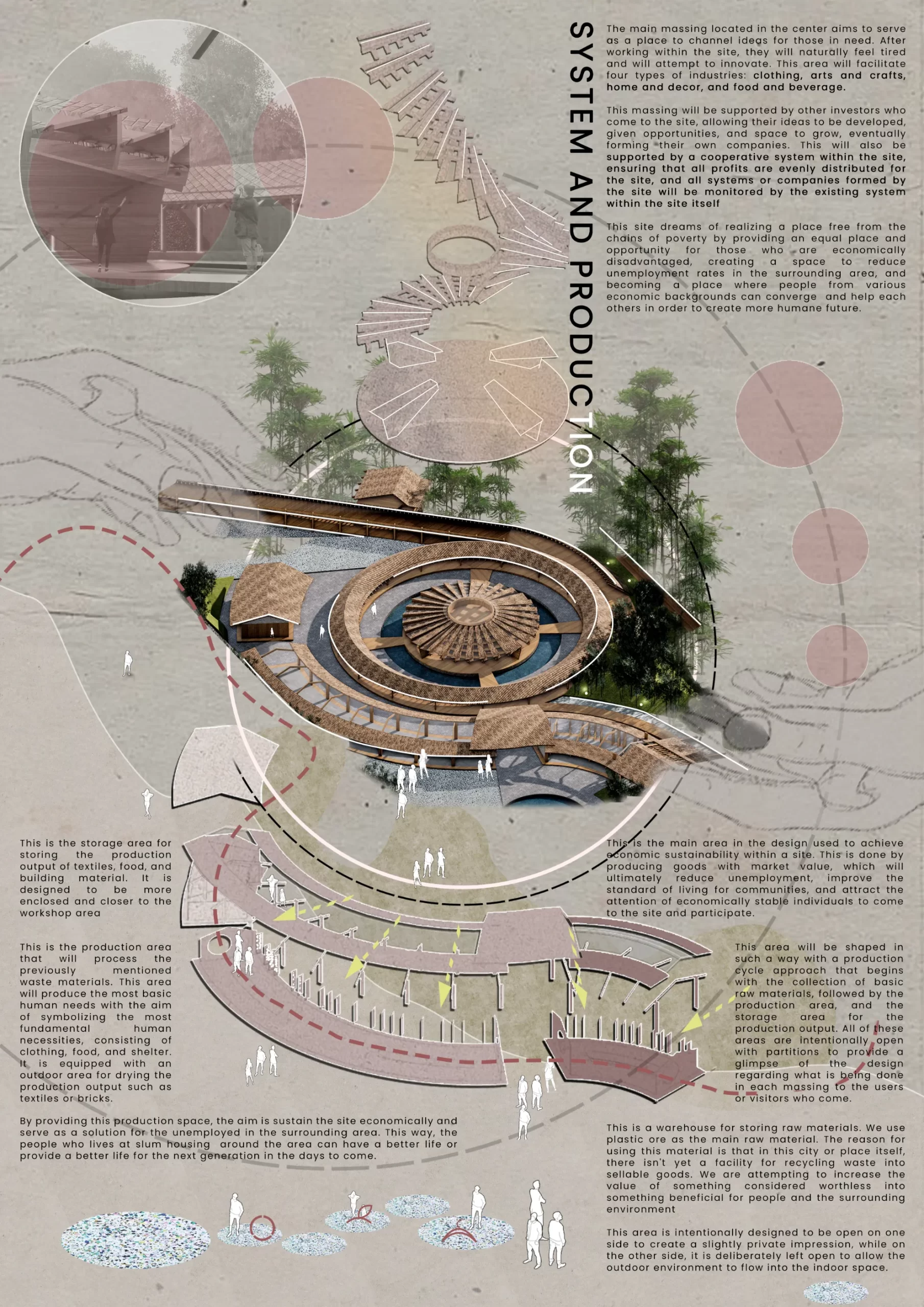
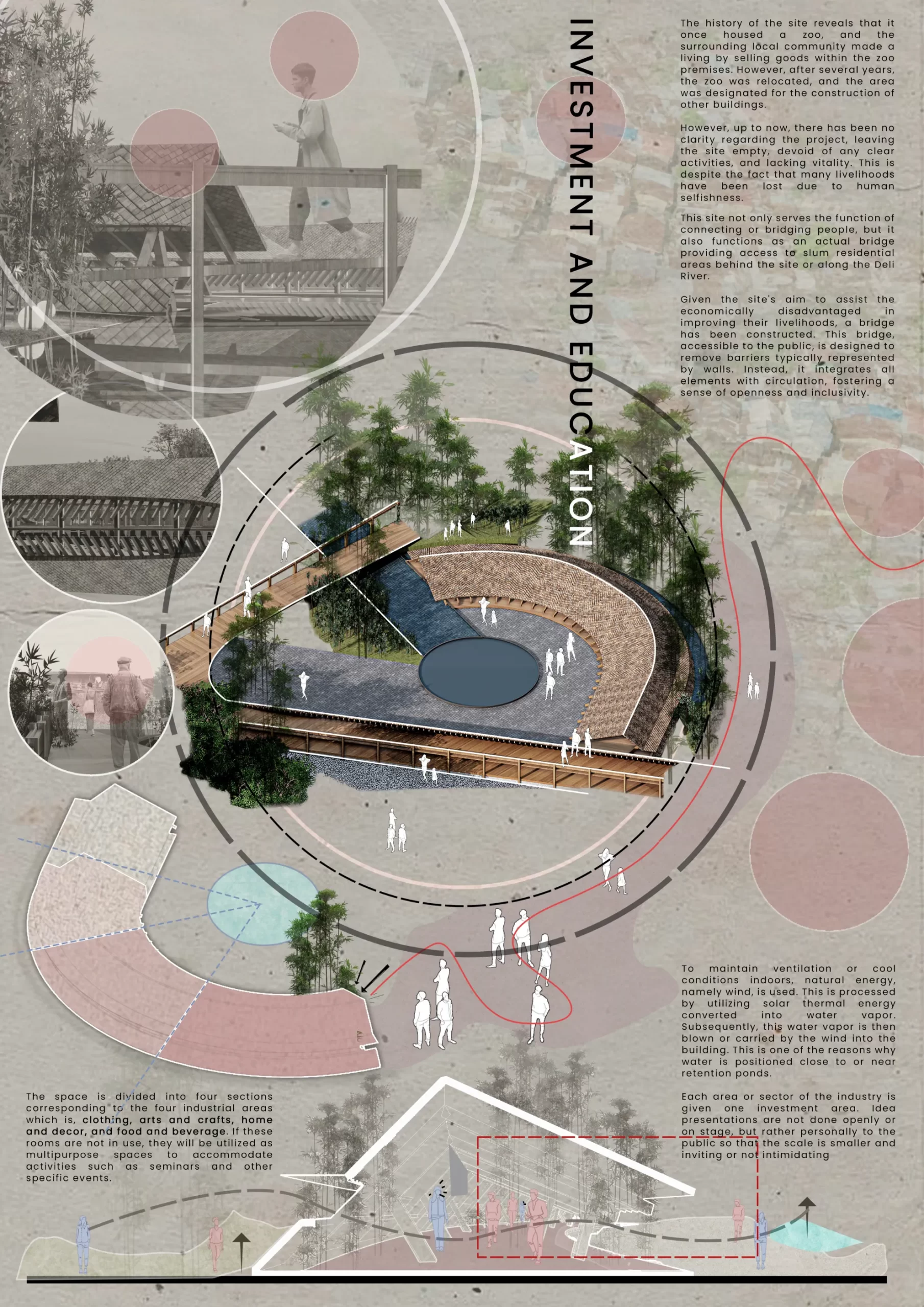
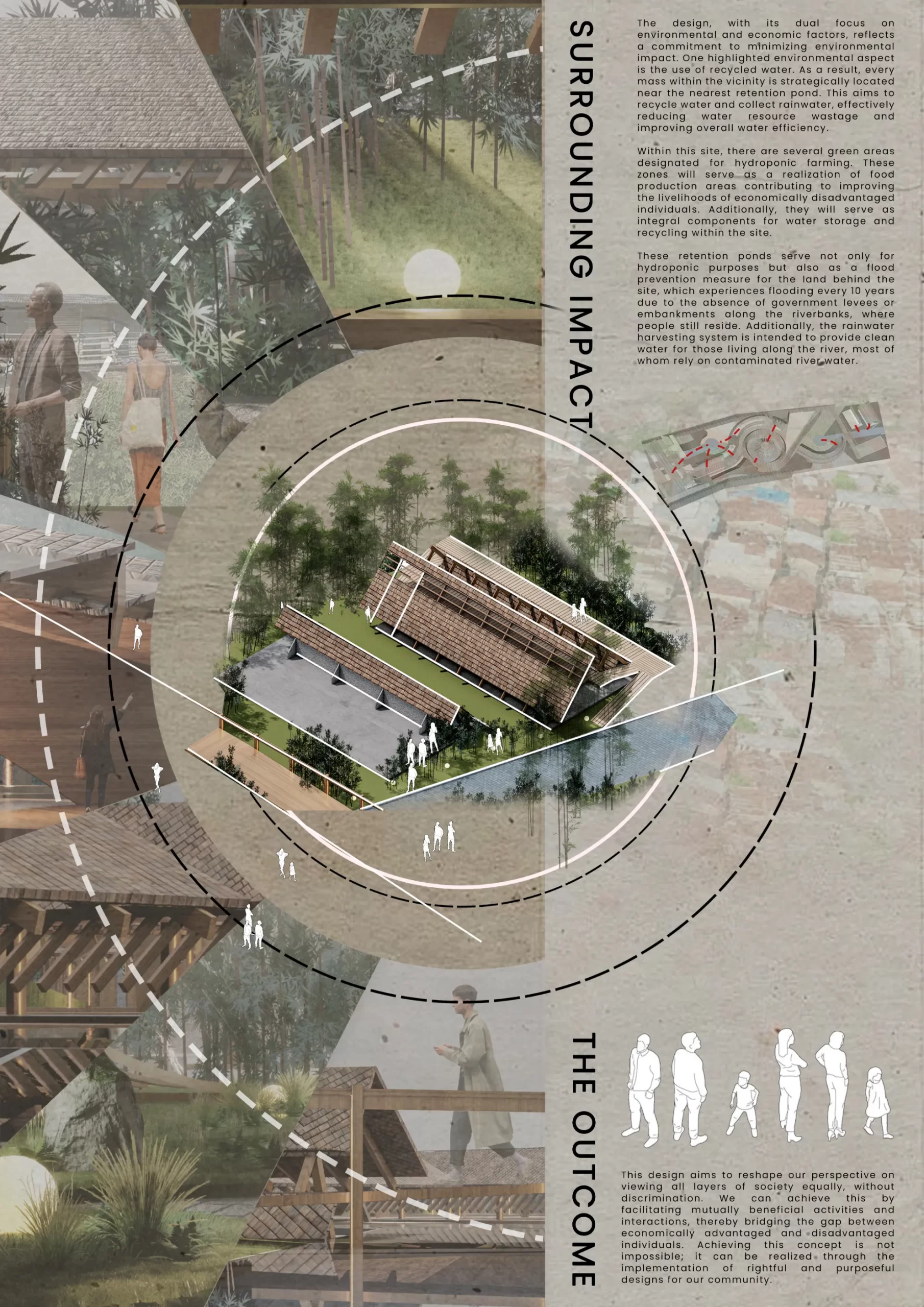
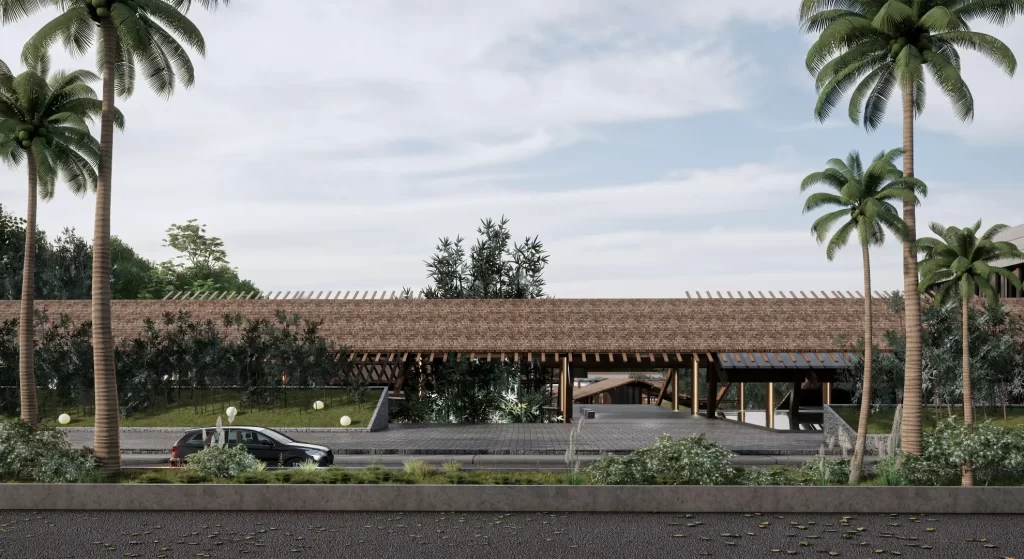
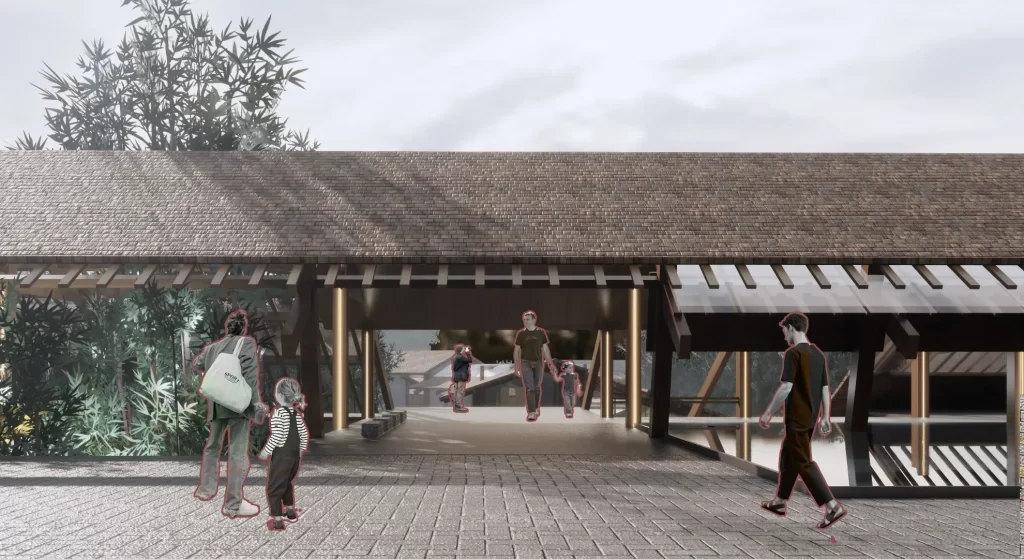
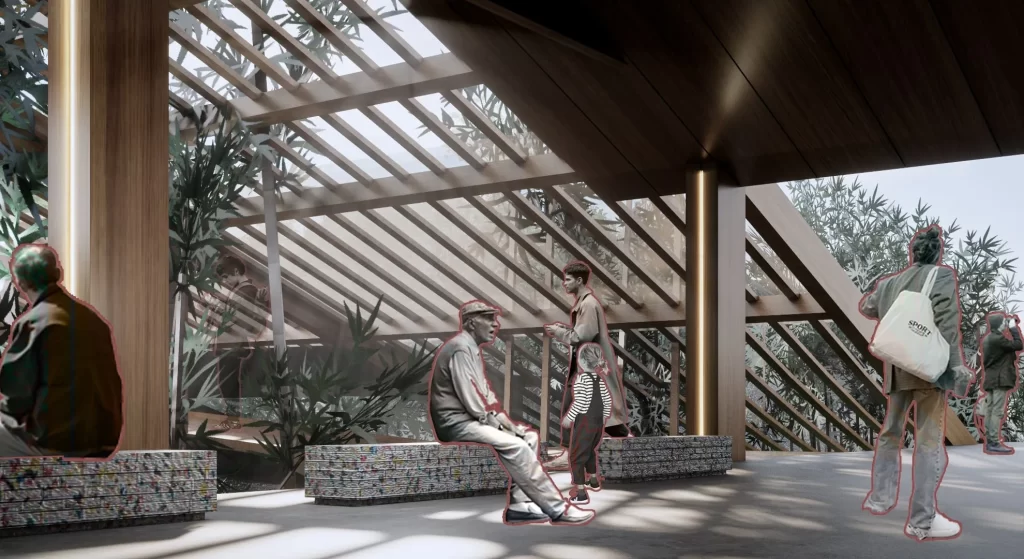
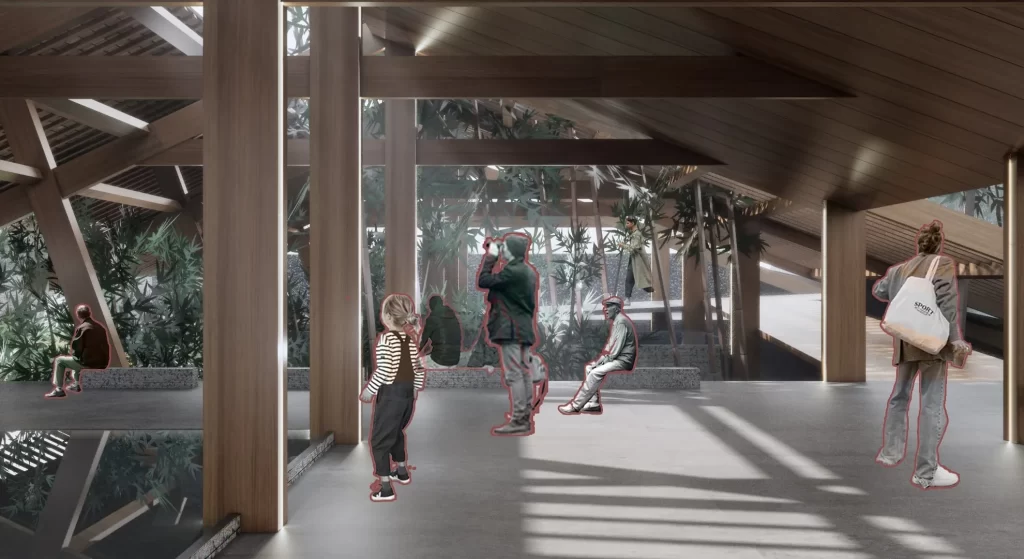
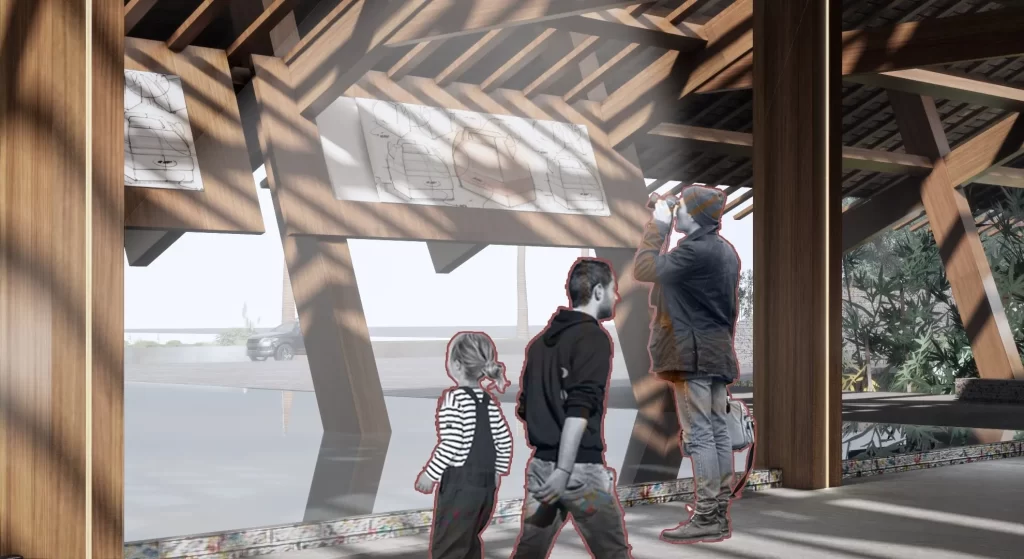
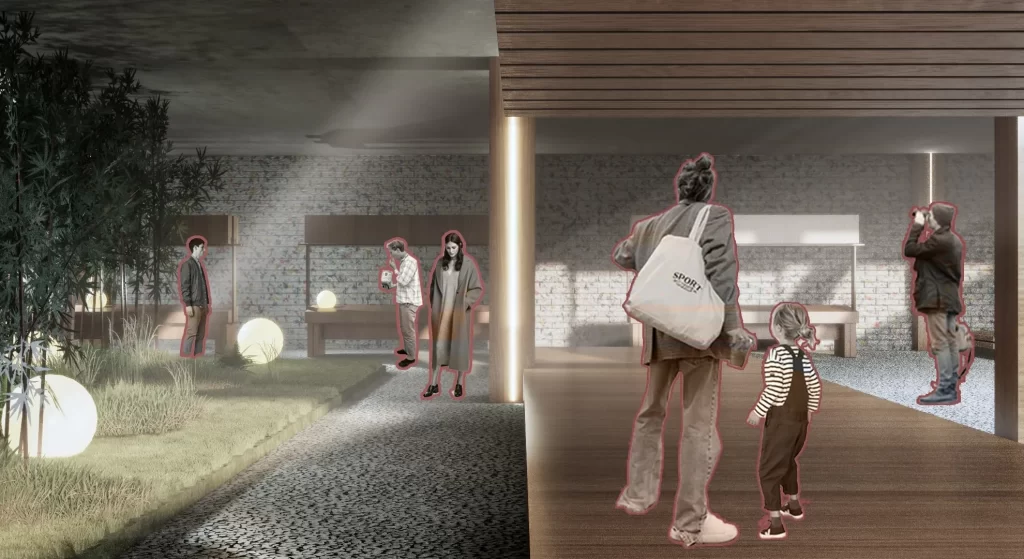
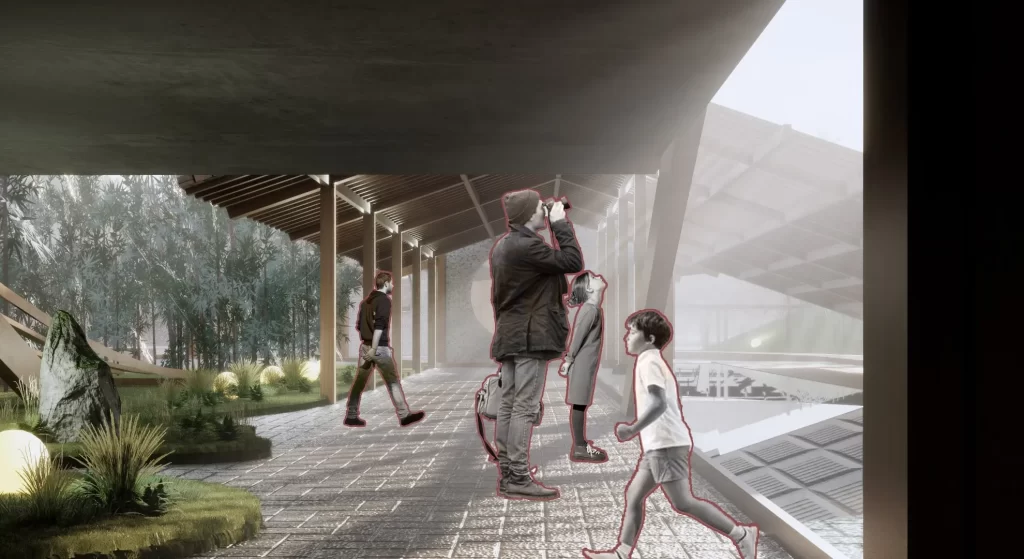
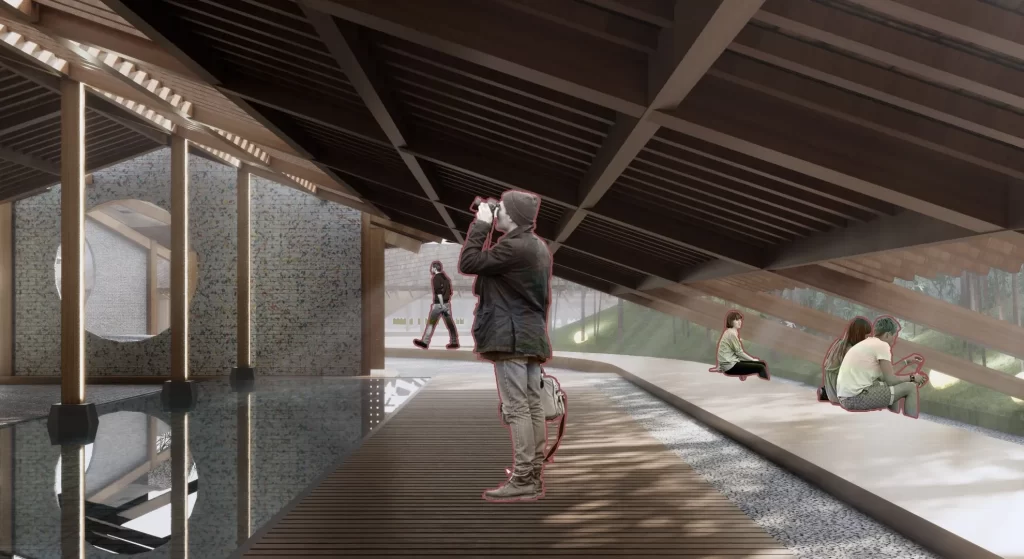
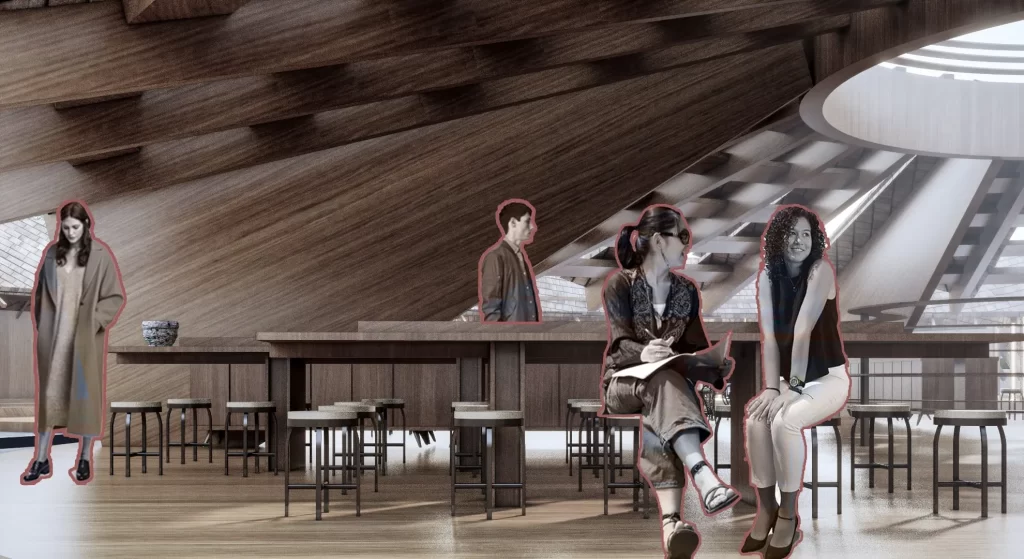
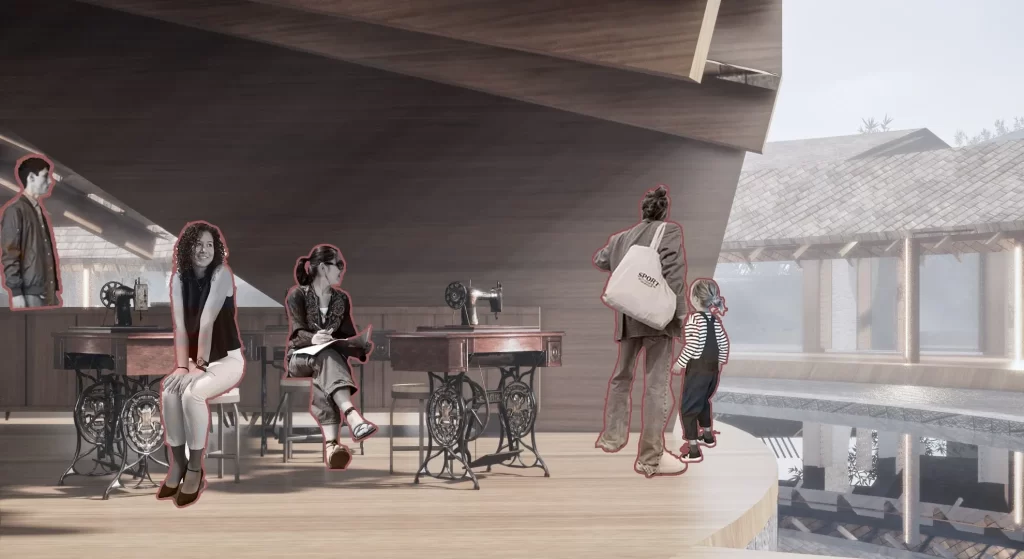
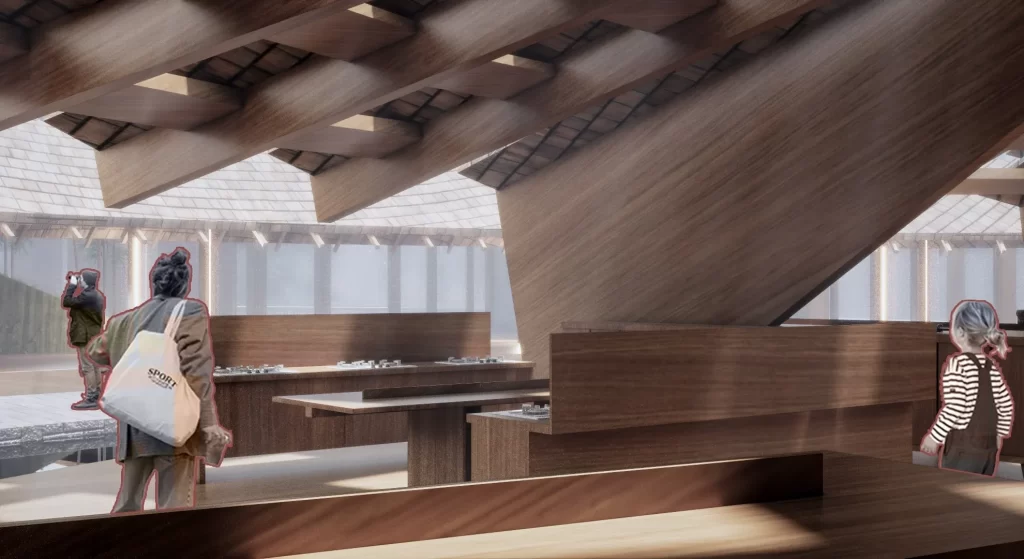
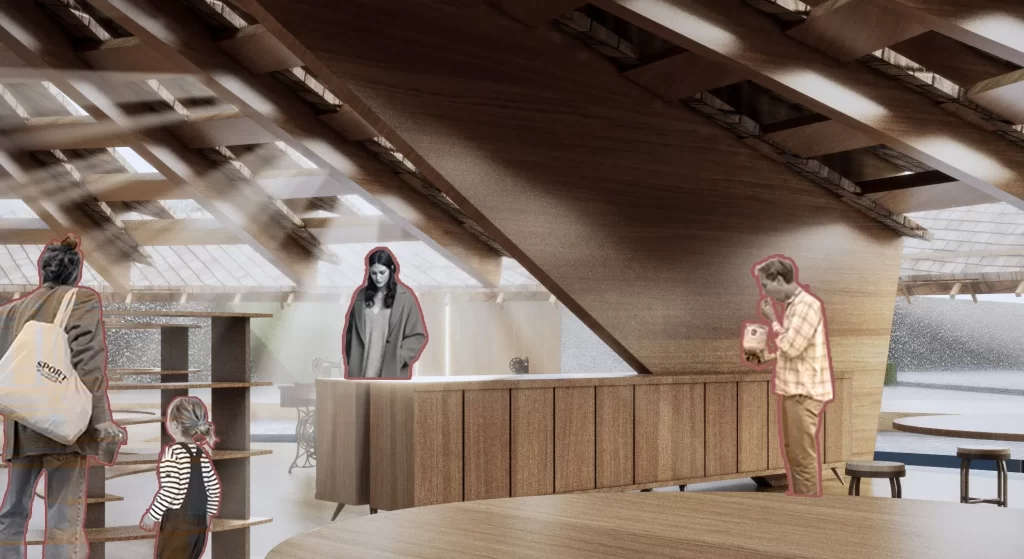
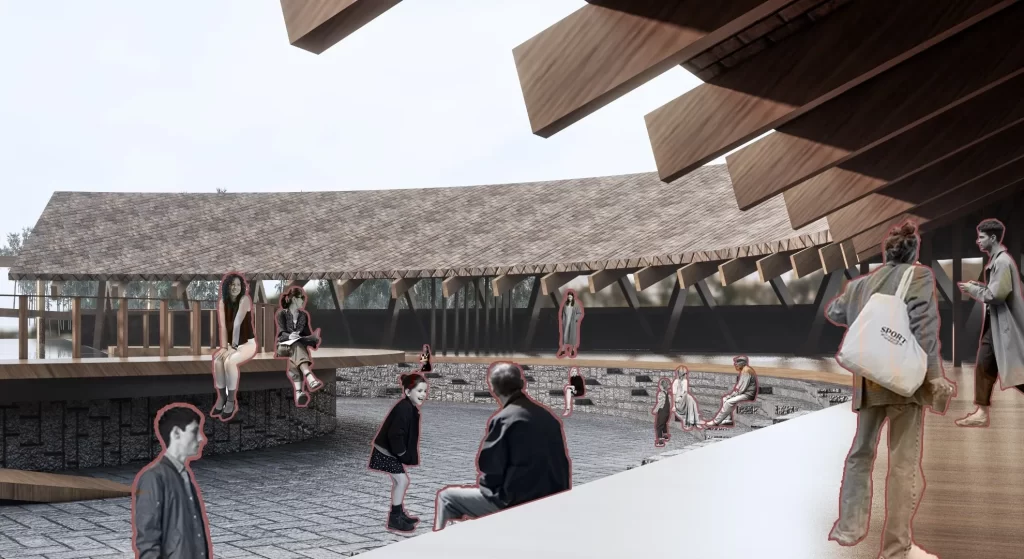
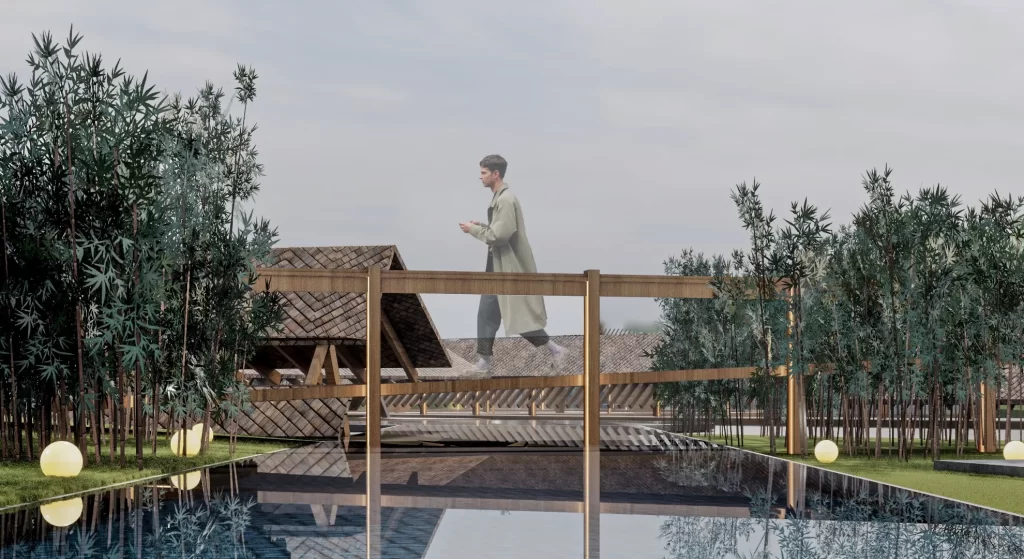
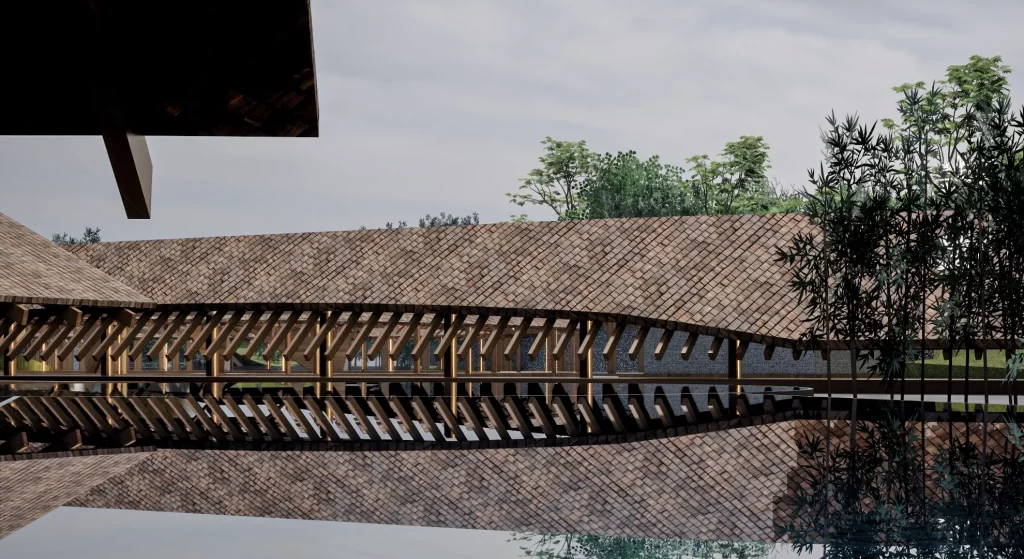
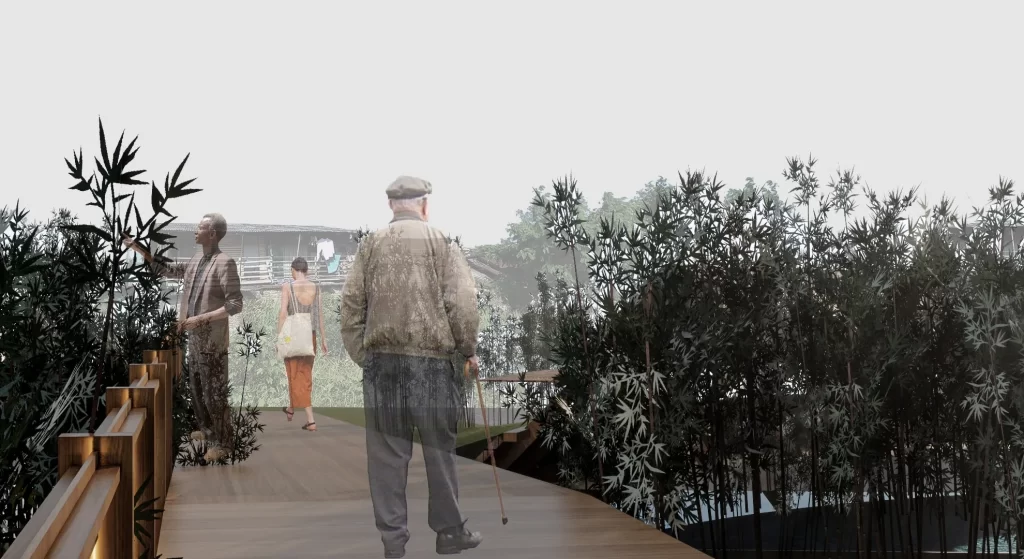
Showcase your design to an international audience
SUBMIT NOW
Image: Agrapolis Urban Permaculture Farm by David Johanes Palar
Top
Project title : The Wail of Hope Theme/ Concept : The rectification of Economic Disparity through sustainable economy and environment approach Every place, from villages, towns, to entire countries across the globe, undoubtedly experiences economical issues that require communities to achieve stability from an economical system in order to attain a decent life. From this, arise those who are economically capable and those who are not, as the result, it will clearly show the disparity between both parties. Logically, those who are capable can easily sustain their basic needs such as food, shelter, and clothing. Meanwhile, those who are not capable should prioritize one of the basic needs, with food being the most essential. Consequently, other necessities are often neglected. People who are economically disadvantaged generally tend to neglect education and prioritize seeking livelihood by seeking for more suitable jobs. As a result, they may lack awareness of their surroundings, becoming selfish and only concerned about themselves. The site selection was conducted on Bridgen Katamso Street, Medan, North Sumatra. Along the access road in front of the site, there are many commercial areas like rows of shops along the street. Directly adjacent to the site is a mall primarily serving daily needs. In contrast, behind the mall and next to the site are areas directly bordering the untamed river, where there are many slums. This underlines the economic disparity happen in this area. The site's condition was once a zoo. The zoo was relocated, and the site was then left without a clear continuation plan for its construction. Consequently, the site remains abandoned with no clear activity, much litter is left unattended due to the absence of a proper waste management system. Although in the past, locals used the site for selling and trading when the zoo was still operational. This clearly portrays the livelihoods being snatched away. This condition illustrates the injustice towards those who are economically disadvantaged, forcing them to seek any available job, even with minimal pay. They just wanted to survive without considering their own or their future generations' well-being. This cycle will continue through generations, the phenomenon known as the chain of poverty. What if we facilitate an activity benefiting both economically stable and unstable parties due to the economic gap? What if we play a reverse card to reverse the job loss caused by the unclear purpose of the site's construction? The site's design is based on the trilogy embraced by Indonesians, focusing on clothing, food, and shelter, aiming to elevate human living standards from the most basic needs. Due to the potential found in the site's waste, which could be transformed into high-value products, and the lack of facilities in the area or city to convert waste into high-value items, this site becomes the primary processing area. Processed waste, turned into plastic shreds elsewhere, will be transformed into nylon clothing as a symbol of clothing, hydroponic bases as a symbol of food, and plastic bricks as a symbol of shelter. Economically disadvantaged individuals will be trained to produce these three products to create new job opportunities. These products will be the main focus of the site's economic production, utilizing a cooperative system where profits will be evenly distributed among all workers. As we work, tiredness will naturally arise, and the workers, mostly economically disadvantaged will strive to come up with new ideas for recycling plastic waste. We'll support these efforts, making them the main focus of the site. The place for pitch this idea is called The idea incubation, this will facilitate four kind industries: arts and crafts, home and décor, food and beverage, and clothing. All main ingredients for these industries will originate from the site, for example, vegetables grown hydroponically, which will also introduce a more modern approach to food sustainability. From The idea Incubation, it will be extended to an investment area aimed at attracting economically capable individuals to participate in site activities, fostering integration among different societal layers. Not only will the investment area attract attention, but the site will also include temporary accommodation for learning purposes for those involved in site management, this will teach them practical economic management skills. All areas of the site, from skill training to incubation areas and the investment area, are aimed at economic sustainability within the site, supported by an environmentally sustainable approach such as providing a water recycling system for clean water provision around or within the site itself. The provision of all facilities within the site aims to bridge the gap between the economically disadvantaged and advantaged, converge, and also engaging them in the same activities. All of this conceptual can be achieved through designing the rightful and purposeful design for the community surround us.
The answer of unheard scream from people at slums housing



















